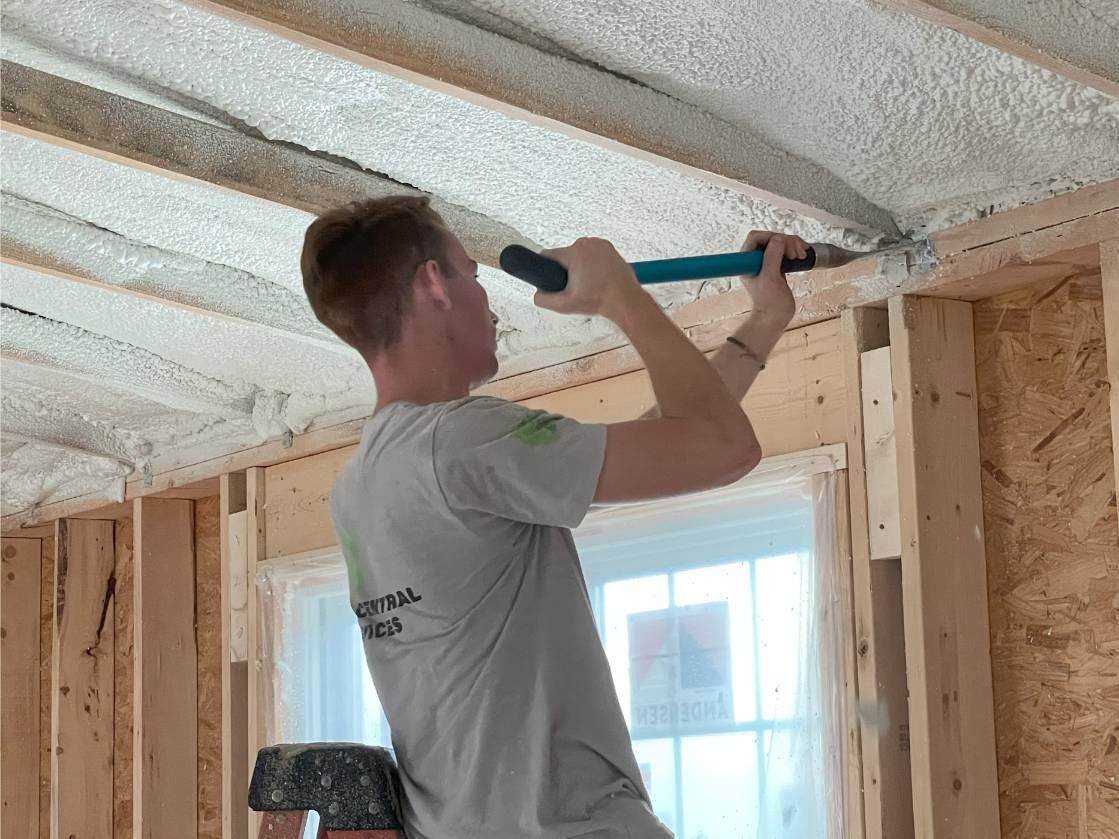Search for topics or resources
Enter your search below and hit enter or click the search icon.

You’re considering spray foam insulation for your project but have some concerns. You know that spray foam is an expensive insulation material. However, you don’t mind investing if you know it will last. You’re wondering about the longevity of spray foam. Can spray foam insulation deteriorate?
South Central Services has insulated hundreds of projects with spray foam in and around Mechanicsburg, Pennsylvania. The reality is that spray foam can deteriorate, but it should be protected when installed by a qualified professional.
By the time you finish reading, you’ll understand:
Don't have time to read right now? Check out everything you need to know at a glance.
Spray foam insulation is permanent. One of the selling features of spray foam is that it shouldn’t break down. While other insulations can sag, settle, or shift over time, spray foam is sprayed in place.
Spray foam is so permanent that people sometimes have concerns about its environmental friendliness and life cycle. However, spray foam insulation can be broken down by ultraviolet rays in the sunlight.
When spray foam is exposed to sunlight, the color of the foam begins to change. What was initially a creamy white starts to turn yellow. This color change is an indication of the foam breaking down. If spray foam was left outside with constant sun exposure, it would yellow and decompose much more quickly.

Because of UV rays and sunlight risks, foam manufacturers have created coverings to protect the spray foam from deterioration. In a commercial setting, roofing foams are usually covered with a coating to protect them from direct sunlight. In residential settings, foam is often covered by coatings or drywall panels.
Without the interference of UV rays, spray foam should last for many decades.
So, why exactly is spray foam so permanent? What about this product raises concerns about the environment and recycling?
Spray foam insulation is created through a chemical reaction. Unlike other insulation products, spray foam cannot be purchased at a home improvement store. Only the chemical components are available for sale.
The technical name for spray foam is actually spray polyurethane foam, which refers to the chemical composition of the foam. Spray foam insulation is a plastic polyurethane foam. Urethane also exists in many other household products, such as mattresses and the soles of shoes.
When spray foam is installed, two chemical components meet and create foam wherever the spray gun is pointing. The goal is to install a stable plastic foam that has adhered to the surface. By spraying and manufacturing the foam onsite, the product can offer unique benefits that other insulations can’t.
To maximize the lifecycle of the foam, insulation contractors protect the foam from ultraviolet rays. Since the plastic foam is made via chemical reaction, it should last indefinitely.
Not only does plastic foam physically remain in place, but its performance is also long-lasting.
R-value, or resistance value, commonly measures insulation performance. R-value defines how well a material can resist conductive heat transfer. Fiberglass batt insulation comes in a variety of R-values. Blown-in products can achieve a higher R-value with more product installed.
However, with both batt and blown-in products, the R-value changes over time. When blown-in insulation settles, the R-value decreases. If a fiberglass batt sags over time or absorbs any moisture, the R-value significantly decreases. Even if the insulation itself has not deteriorated much, its performance will be compromised due to the passage of time.
Spray foam insulation is one of the few insulation materials that keeps a consistent R-value. Since spray foam doesn’t sag or settle, there is no opportunity for R-value change. As long as it is protected from UV rays, the R-value from year 1 will decrease a negligible amount by year 50.
Spray foam insulation can deteriorate when exposed to ultraviolet rays. This weakness of spray foam insulation is well-known and protected against by spray foam manufacturers. Whether the foam receives a liquid coating or a drywall covering, spray foam deterioration can be prevented.
If you choose to invest in spray foam, you can trust that your investment will last for the lifetime of your home. Without the concern of UV rays, spray foam will consistently perform and deliver an uncompromising R-value.
Now that you understand what circumstances lead to spray foam deterioration, your next step is to:
Disclaimer: While we strive to publish information accurate to building science, local building codes and standards supersede our recommendations.
Kilian has co-owned and operated South Central Services for 8 years. He is passionate about community involvement. In his spare time, he enjoys being with his family, playing ice hockey, and going fishing with friends.
Topics: